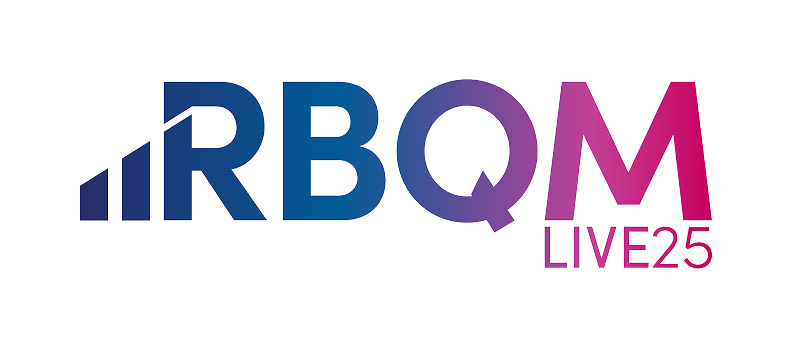Medical science is advancing at a never before seen rate, but costs are spiralling meaning clinical trials need to change if they are to ensure innovative treatments continue to be developed and delivered. Investigator-led trials are a vital part of the jigsaw of modern medicine. They can provide further evidence on novel products and devices, help tackle unmet need by incorporating patient-reported outcomes and facilitate the smooth re-purposing of products later down the road.1 They are not without their challenges, and often lack the strength of Pharma’s financial and operational backing, but the central principle of Risk-Based Quality Management (RBQM) – i.e. focus on what matters – can help.
Industry-Led VS. Investigator-Led Studies
The industry has embraced patient centricity, and most players now understand the value of designing clinical trials that address unmet needs, as articulated by the product’s end-user. But while industry-sponsored trials are usually highly efficient and benefit from Pharma’s highly organized structures, they tend to be more restrictive in areas such as eligibility criteria and choice of comparators and outcomes than their investigator-led counterparts.2 What’s more, industry-led trials generate insufficient data on long-term toxicity – information paramount to our understanding of the post-approval, real life safety and effectiveness of novel drugs and devices. Investigator-led clinical trials can assess patients and settings that were not necessarily covered by the initial approval, leading to potential extensions of indications and the refinement of usage in subgroups. This documentation of safety and efficacy can also be used to inform the process of repurposing existing drugs. Additionally, large trials that address important public health questions have long been seen as one of the pillars of evidence-based medicine.3 It all adds up to a clear need for more, larger investigator-led studies. And in a world of highly involved, extremely expensive regulation and bureaucracy, that means finding ways to conduct them as cost efficiently as possible.
Spiralling Costs
We all know that clinical trial costs are rising, with recent estimates suggesting pivotal studies for novel therapies had a median price tag of $19 million.4 During industry-sponsored trials, vast amounts of money are spent making sure that the data collected are error free. Organisers tend to do this through on-site monitoring (site visits), including source-data verification (SDV), together with centralized monitoring such as data management and statistical monitoring. But the cost of on-site approaches is huge in today’s large multi centre trials. Some estimates have gone as far as to say that the cost of on-site monitoring represents about 60% of that of the total trial.4It is not a sustainable approach for investigator-led trials.
The Solution: Focus on What Matters
If monitoring activities significantly impacted safety or results, the high costs could be justified, but there is little evidence to suggest this is the case. SDV alone can take up to 50% of on-site visit time, with significant cost implications. Regulatory agencies the world over are aware that it’s time to reengineer monitoring, and have advocated risk-based quality management (RBQM), which includes risk-based monitoring (RBM) and central statistical monitoring (CSM)5,6, as the best way to do just that. RBQM “focuses on the things that matter” and in a randomized clinical trial, what matters is providing a reliable estimate of the difference in efficacy and tolerance between the treatments being compared. Criteria to assess efficacy and tolerance may differ between industry- sponsored trials and investigator-led trials. In terms of safety, investigator-led trials can collect much simpler data than industry-sponsored ones. Recording the occurrence of Common Terminology Criteria for Adverse Events grade 3 or 4 toxicities, plus any unexpected toxicity not known to be associated with the drug being, will typically suffice. What’s more, medical history and concomitant medications, which may be important to document drug interactions with an experimental treatment, serve no useful purpose in investigator-led trials. Equally, data quality evaluation needs to be “fit for purpose”. Aiming for 100% accuracy in all the data collected during a pivotal trial of an experimental treatment is one thing, but it is not always necessary in investigator-led studies.
Understanding Central Statistical Monitoring
Investigator-led trials can use CSM, part of RBQM, as the primary data quality checking method. It helps study organisers to identify and then focus on “what matters”. The process provides statistical indicators of quality, based on data collected in the trial from all sources, and involves tools such as “Key Risk Indicators” and “Quality Tolerance Limits”. The idea is premised on the fact that data consistency is an acceptable surrogate for data quality. When used well, CSM produces statistical signals that reveal potential issues in specific centres, giving study organisers the opportunity to rectify them – whether that is through a clarification, a query, or an audit.
Experience from trials have shown CSM can identify:
- Fraud, such as fabricating patient records or even entire patients
- Data tampering, such as filling in missing data, or propagating data from one visit to the next
- Sloppiness, such as not reporting some adverse events or transcription errors
- Mis-calibration or other problems with automated equipment
Different types of data errors impact trial results in different ways, but the four themes outlined above have one thing in common: CSM can more easily identify them at a far lower cost than traditional labour-intensive methods such as SDV and other on-site data reviews.
Conclusion
The majority of today’s trials are investigator-led, and the nature of modern medicine means that is only set to increase in the coming years. But the rising costs of clinical research, in part due to extensive trial monitoring processes that focus on unimportant details, poses a threat to the expansion of this incredibly important mode of investigation. By focusing on the things that really matter, RBQM and CSM can help drive down the cost of investigator-led randomized clinical trials, while also improving their quality.
References
- Buyse M, Trotta L, Saad E, at al (2020) Central statistical monitoring of investigator‑led clinical trials in oncology. Int. J. Clin. Oncol 25:1207–1214
- Naci H, Davis C, Savovic J et al (2019) Design characteristics, risk of bias, and reporting of randomised controlled trials supporting approvals of cancer drugs by European Medicines Agency, 2014–16: cross sectional analysis. BMJ 366:5221
- Yusuf S, Collins R, Peto R (1984) Why do we need some large, simple randomized trials? Stat Med 3:409–422
- Moore TJ, Zhang H, Anderson G, et al (2018) Estimated costs of pivotal trials for novel therapeutic agents approved by the US Food and Drug Administration, 2015–2016. JAMA Intern Med 178:1451–1457
- European Medicines Agency (2011) Reflection paper on risk based quality management in clinical trials. Eur Med 1:94–103
- US. Department of Health and Human Services (2013) Food and drug administration guidance for industry. Oversight of Clinical Investigations. A Risk-Based Approach to Monitoring. National Academies Press, DC



